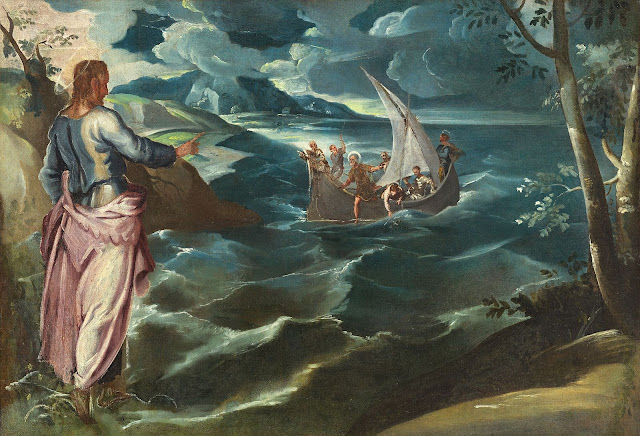Christ at the Sea of Galilee by Tintoretto (Interpretation and Analysis)
 |
| Christ at the Sea of Galilee Source: Wikimedia Commons |
I’ve written many times about my love of Mannerist painting. It’s a particularly weird, yet dramatic genre of painting, both qualities that endear it to me and make it continually interesting to modern viewers.
The Venetian artist Tintoretto was one of the most famous Mannerist artists of his time, and Christ at the Sea of Galilee is one of his most astounding paintings. The painting depicts a biblical scene in which Christ appears to the apostles while they are fishing in the Sea of Galilee.
The piece is an outstanding example of Tintoretto’s mannerist style. He was famous for his so-called furious brushstrokes, which give his work a bold and brash aspect. His loose brushstrokes can be seen in the lapping waves of the Sea of Galilee and the billowing clouds. Christ stands on the shore, facing away from the viewer (an unusual visual choice). He towers above the boat below, unnaturally tall. In fact, all sense of proportionality in the piece is warped. The boat seems almost toy sized, while the sea seems scarcely bounded by its shores, like an ocean poured into a bathtub. The color scheme is also warped, with unnaturally cool, grey-toned shades dominating the scene.
All of this is part of the Mannerist ethos, which strived to achieve this strangeness. Mannerist paintings are deliberately exaggerated, seeking instead to create visual tension in order to achieve greater emotional impact. To twenty-first century viewers, paintings like Christ at the Sea of Galilee feel very modern, but they are also very much of their own time. As I noted above, Tintoretto’s work is particularly striking, characterized by exceptional boldness and drama. Even his contemporaries recognized that his artistic energy (very much on display in this piece) was unusual and unique.
Tintoretto uses these characteristics to great effect Christ at the Sea of Galilee, harnessing the strangeness of the Mannerist style to give the piece the emotional depth that the subject matter requires. The result is a stunning and memorable piece that captivates the viewer’s imagination.
Christ at the Sea of Galilee demonstrates Tintoretto’s artistic prowess and mastery. It is a singularly expressive piece that captures the spiritual energy of the subject matter while also giving the viewer access to a level of emotional reality.
Disclaimer: I’m not an art historian or an expert on this topic. The above is my opinion, based on my interpretation of my foreknowledge of art and history. If I’ve done any additional research, I’ll note it above.



Comments
Post a Comment